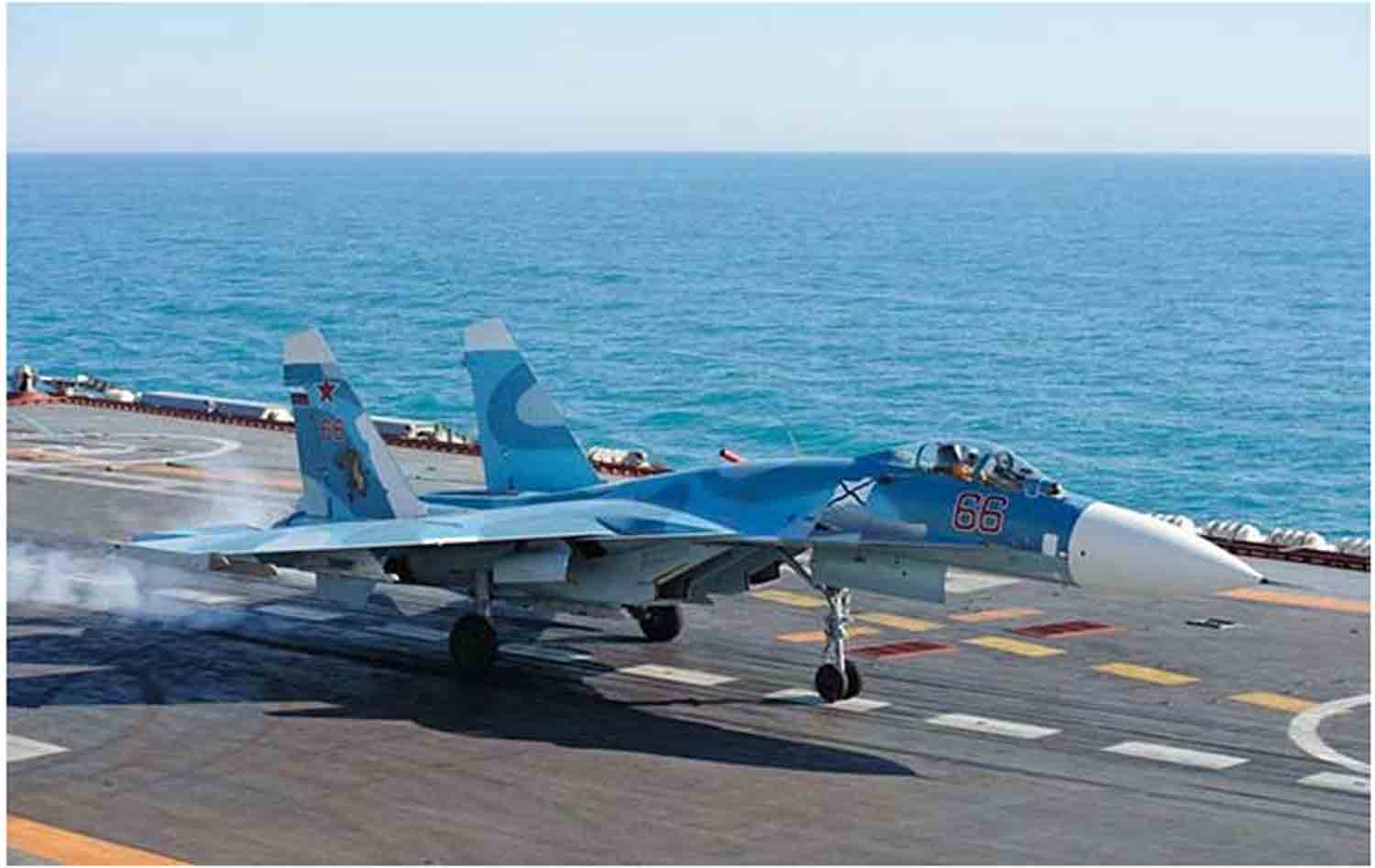Two Norwegian F-35A stealth fighters, engaged in the Quick Reaction Alert (QRA) mission, intercepted a Russian Su-33 as Russian strategic bombers traversed the North and Norwegian Seas. This incident is particularly significant, as the Su-33 is a heavy carrier-based fighter intended for deployment from Russia’s only aircraft carrier, the Admiral Kuznetsov.
The Su-33 was part of an escort formation that included Russian Tu-95MS bombers and MiG-31 interceptors. The Russian Ministry of Defense described the operation as a “routine flight over neutral waters,” which lasted over four hours.
The deployment of an Su-33 in this context, far from its typical carrier operations, is noteworthy. While it shares structural similarities with the Su-27, the Su-33 does not possess the advanced avionics and multirole capabilities found in the Su-30SM or Su-35, which are generally utilized for escort duties.
Moreover, with the Admiral Kuznetsov currently under repair, all Su-33s are operating from land-based airfields. The use of this aircraft in the far north may suggest either constrained resources for the mission or an attempt to explore alternative long-range escort configurations.
Major General Øyvind Gunnerud of the Royal Norwegian Air Force remarked on the interception, emphasizing, “Our quick reaction alert mission is vital for our national defense and the collective security of NATO. Our swift response highlights the alliance’s dedication to regional stability.”
NATO routinely intercepts Russian military aircraft operating near allied airspace, but this recent mission occurs against a backdrop of increased tensions between the West and Moscow following Russia’s invasion of Ukraine.
Russia frequently deploys Tu-95MS strategic bombers to showcase its military capabilities and assess NATO’s response times. The MiG-31, recognized for its high-altitude performance and capacity to carry Kinzhal hypersonic missiles, plays a crucial role in these missions.
The involvement of the Su-33 introduces an intriguing element, prompting speculation about whether Russia is testing new strategies or merely making use of available aircraft for extended patrols.
The interception of a Russian Su-33 by Norwegian F-35 fighter jets transcends a typical military engagement; it is an incident that draws significant interest from military analysts and geopolitical observers for several important reasons.
This event, which took place in international airspace close to Norway’s borders, highlights the persistent tensions between NATO and Russia, emphasizing the strengths and weaknesses of contemporary military aviation technology.
The Su-33, referred to by NATO as the Flanker-D, is a carrier-capable fighter derived from the renowned Su-27, featuring modifications for naval operations such as a reinforced structure, folding wings, and canards to improve maneuverability.
The deployment of the Su-33 is infrequent when compared to land-based Russian aircraft, making any interaction with this asset particularly significant. The primary function of the Su-33 is to achieve air superiority, and its presence in the area often indicates strategic naval operations or drills, thereby adding a layer of geopolitical importance to the interception.
Conversely, the Norwegian F-35s are among the most sophisticated military assets currently in operation. The F-35, also known as the Lightning II, is a fifth-generation fighter jet equipped with stealth features, advanced sensor integration, and exceptional situational awareness.
For Norway, utilizing the F-35 marks a significant enhancement of its defense capabilities, particularly given its strategic proximity to Russian territory.
The involvement of the F-35 in this interception is noteworthy as it highlights the operational readiness and strategic relevance of these aircraft in actual scenarios, which are frequently discussed in theoretical contexts or simulations.
The uniqueness of this encounter is further emphasized by the nature of the operation. Interceptions typically involve older generation aircraft or reconnaissance planes, but this instance featured two advanced fighters from opposing sides of a geopolitical spectrum.
This situation clearly illustrates how NATO nations are prepared to react to Russian military maneuvers near their airspace, demonstrating the strategic application of stealth technology against conventional, high-performance combat aircraft.
This incident also acts as a practical evaluation of the F-35’s performance in potentially hostile scenarios. Although the F-35 has received accolades for its cutting-edge technology, it has faced scrutiny regarding its expense, effectiveness in specific environments, and its integration within current military frameworks.
An event like this, where F-35s effectively intercept and deter a sophisticated opponent such as the Su-33, yields critical performance data that is essential for both supporters and detractors of the aircraft.
On a larger scale, this occurrence highlights the ongoing strategic dynamics in the Arctic and North Atlantic regions. With both Russia and NATO countries ramping up their military operations, such encounters are becoming increasingly common, indicating a new phase of cold warfare characterized by technological advancement and strategic maneuvering.
The interception not only evaluates military equipment but also assesses the diplomatic and strategic reactions of the nations involved.
In summary, the interception of a Su-33 by Norwegian F-35s transcends a mere military drill; it encapsulates the complexities of contemporary warfare, illustrating how nations leverage their most advanced technologies not only for defense but also as instruments of geopolitical influence.
This brief event prompts significant reflection on the future of military confrontations, the shifting landscape of international relations, and the relentless pursuit of technological dominance in defense strategies.
Discover more from Defence Talks | Defense News Hub, Military Updates, Security Insights
Subscribe to get the latest posts sent to your email.





